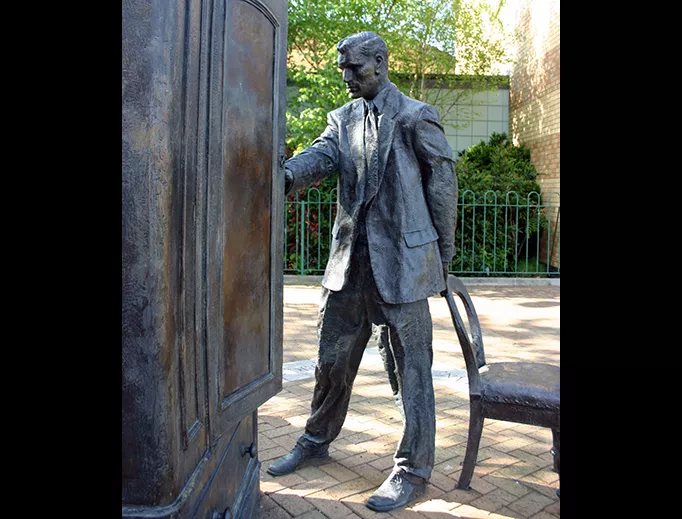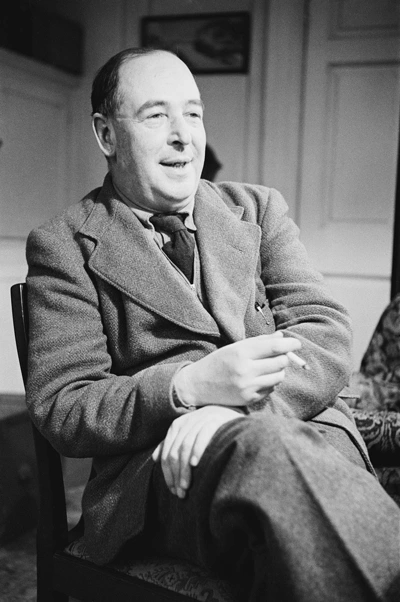Before Narnia there was a friendship that changed everything. Read how J.R.R. Tolkien helped lead C.S. Lewis to Christ one ordinary walk at a time.
C. S. Lewis’s conversion story is not just about two brilliant writers—it’s about how God uses faithful friendship to bring light where there was once doubt. Before Lewis ever became the beloved author of Mere Christianity and The Chronicles of Narnia, he was a staunch atheist who viewed religion as wishful thinking. Yet God was already weaving his redemption through the quiet influence of a friend who loved Christ deeply: J. R. R. Tolkien.
When Lewis arrived at Oxford, he was skeptical of all faith. But Tolkien, a devout Catholic, saw in him both intellectual honesty and a heart still searching. The two men bonded over literature, language, and philosophy, but beneath those conversations, the Holy Spirit began stirring something deeper. Tolkien spoke of Jesus Christ not as legend or moral teacher, but as the living Son of God—the One who stepped into history, died for humanity’s sins, and rose again to bring eternal life.

Lewis admired Tolkien’s mind but couldn’t shake his skepticism. Still, he found himself drawn to Tolkien’s steady belief and the way it made sense of beauty, love, and meaning. What started as intellectual debate became spiritual encounter, as Tolkien’s patient friendship helped open the door for Lewis to consider the claims of Christ with fresh eyes. For a full background on this story, see the detailed account at The Gospel Coalition.
Faith, Friendship, and God’s Hand in Oxford
At Oxford, Lewis and Tolkien were both part of the literary circle known as the Inklings—a gathering of writers who discussed faith, fiction, and the great questions of life. What made this group special was that it wasn’t just about stories; it was about truth. Tolkien’s faith was not an academic exercise. He prayed, read his Bible, and sought to live as a man surrendered to Christ. His quiet example spoke louder than any argument.
Lewis, meanwhile, was struggling internally. He had already been moved by Christian authors like G. K. Chesterton and George MacDonald, whose writings hinted at a world where goodness and reason intertwined. Yet he still saw Christianity as a myth—beautiful, but not real. Tolkien’s friendship changed that. Through countless evenings of deep conversation, he gently reminded Lewis that faith was not blind belief, but trust in the One who made all reason possible.
One evening, their discussion turned directly to Jesus. Tolkien shared that Christ was not a myth invented by men but the ultimate fulfillment of every story humanity had ever told—a Savior who actually lived, died, and rose again. That seed of truth began to grow in Lewis’s heart. For more insight into how this period shaped him, the C.S. Lewis Institute gives a clear summary of the faith journey that followed.

The Night Walk That Changed Everything
Then came the night that would change history. On September 19, 1931, Lewis, Tolkien, and Hugo Dyson took a late-night walk through the grounds of Magdalen College, along a wooded path known as Addison’s Walk. As they walked under the stars, they spoke of faith, imagination, and God’s truth revealed through Christ. Tolkien challenged Lewis’s final objection—that Christianity was merely another myth.
“Now the story of Christ,” Tolkien said, “is simply a true myth—a myth working on us in the same way as the others, but with this tremendous difference that it really happened… Christianity is God expressing Himself through what we call ‘real things.’”
That conversation, recounted in multiple retellings including The Gospel Coalition, struck a chord deep within Lewis. The idea that Jesus Christ was both the eternal Word and a real man who lived, suffered, and rose again made perfect sense of the human longing for redemption. The notion of a “true myth”—not a fantasy, but God’s story made flesh—broke through his intellectual walls.
Lewis did not surrender immediately that night, but something profound shifted. He later wrote that “night after night,” he felt “the steady, unrelenting approach of Him whom I so earnestly desired not to meet.” (C.S. Lewis Institute) It was not a myth that approached him, but the living Christ—patiently knocking on the door of his heart.

The Sidecar Ride to Faith in Christ
The decisive moment came not in a church or a classroom, but on a quiet drive to the zoo. One day in 1931, Lewis climbed into the sidecar of his brother Warnie’s motorcycle for a trip to Whipsnade Zoo. He described the moment in simple words that speak volumes:
“When we set out, I did not believe that Jesus Christ is the Son of God, and when we reached the zoo, I did.”
That sentence, preserved in his writings and retold in The Gospel Coalition’s and Christian History Institute’s summaries, shows how faith sometimes dawns quietly but completely. There were no thunderclaps, no visions—only the realization that Christ truly is who He said He is, the Son of God and Savior of the world.
Lewis’s conversion was not merely intellectual assent; it was spiritual surrender. On that sidecar ride, God’s grace broke through years of doubt. Lewis later wrote that he was “brought in kicking, struggling, resentful, and darting his eyes in every direction for a chance to escape.” But there was no escaping love that deep. Christ had pursued him—and won.
From Conversion to Christian Witness
After accepting Jesus as Lord, Lewis was baptized into the Anglican Church and soon became one of Christianity’s most influential voices. His works like Mere Christianity and The Screwtape Letters were not sterile arguments—they were love letters to the searching heart, born of personal experience with the living God. His faith was anchored in reason but illuminated by grace, the same grace that had reached him through Tolkien’s steadfast friendship.
Tolkien continued to inspire Lewis, and their fellowship became a model for how Christian friendships can glorify God. Though Tolkien was Catholic and Lewis Anglican, they shared one Lord and one mission—to bear witness to Jesus through beauty and truth. Their friendship reflects Proverbs 27:17: “As iron sharpens iron, so one man sharpens another.”
The world often remembers these two men as literary giants, but heaven remembers them as brothers in Christ. Their story shows that God moves through the ordinary—conversations, walks, shared meals—to accomplish the extraordinary. What began as debate over literature became a journey toward salvation. What started as friendship became ministry.
As Lewis later wrote, “I believe in Christianity as I believe that the sun has risen—not only because I see it, but because by it I see everything else.” Through the faithful witness of J. R. R. Tolkien, God used reason, friendship, and love to bring one lost soul into the Kingdom. And through Lewis’s writings, that same light continues to lead countless others to Jesus Christ today.




